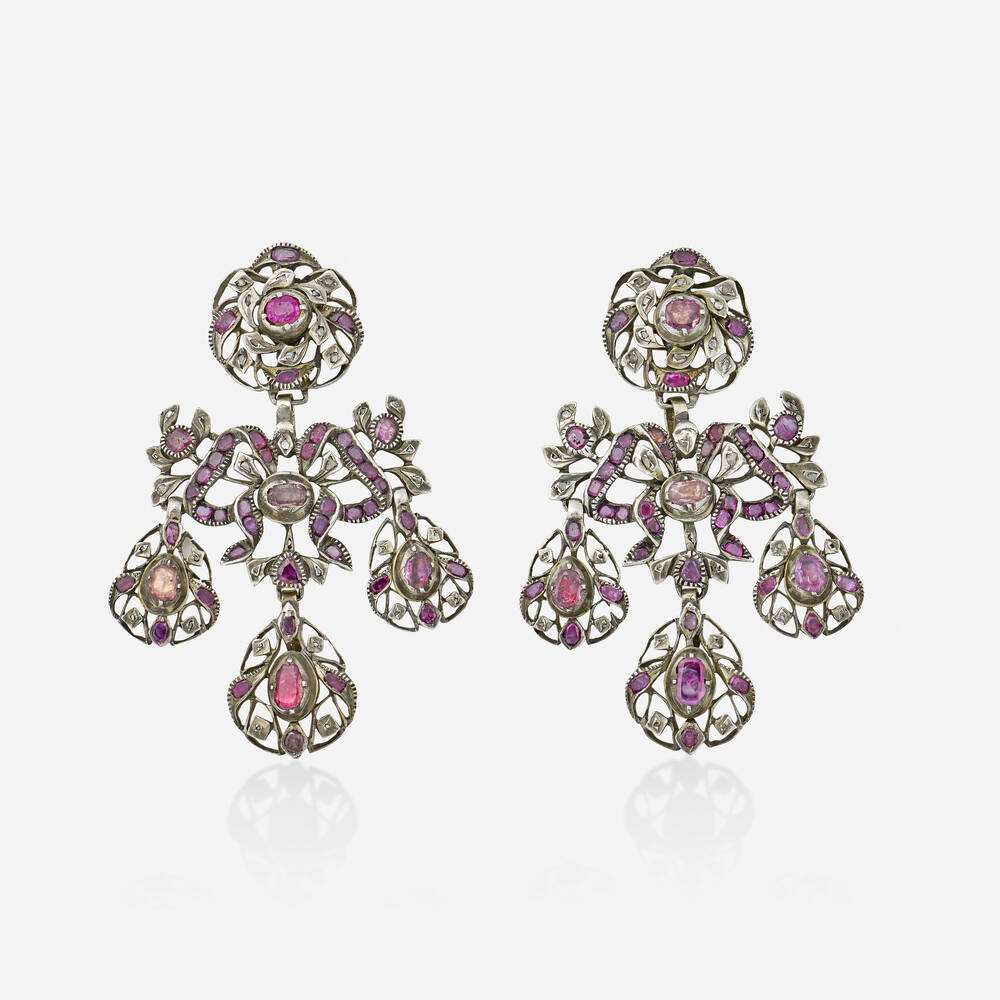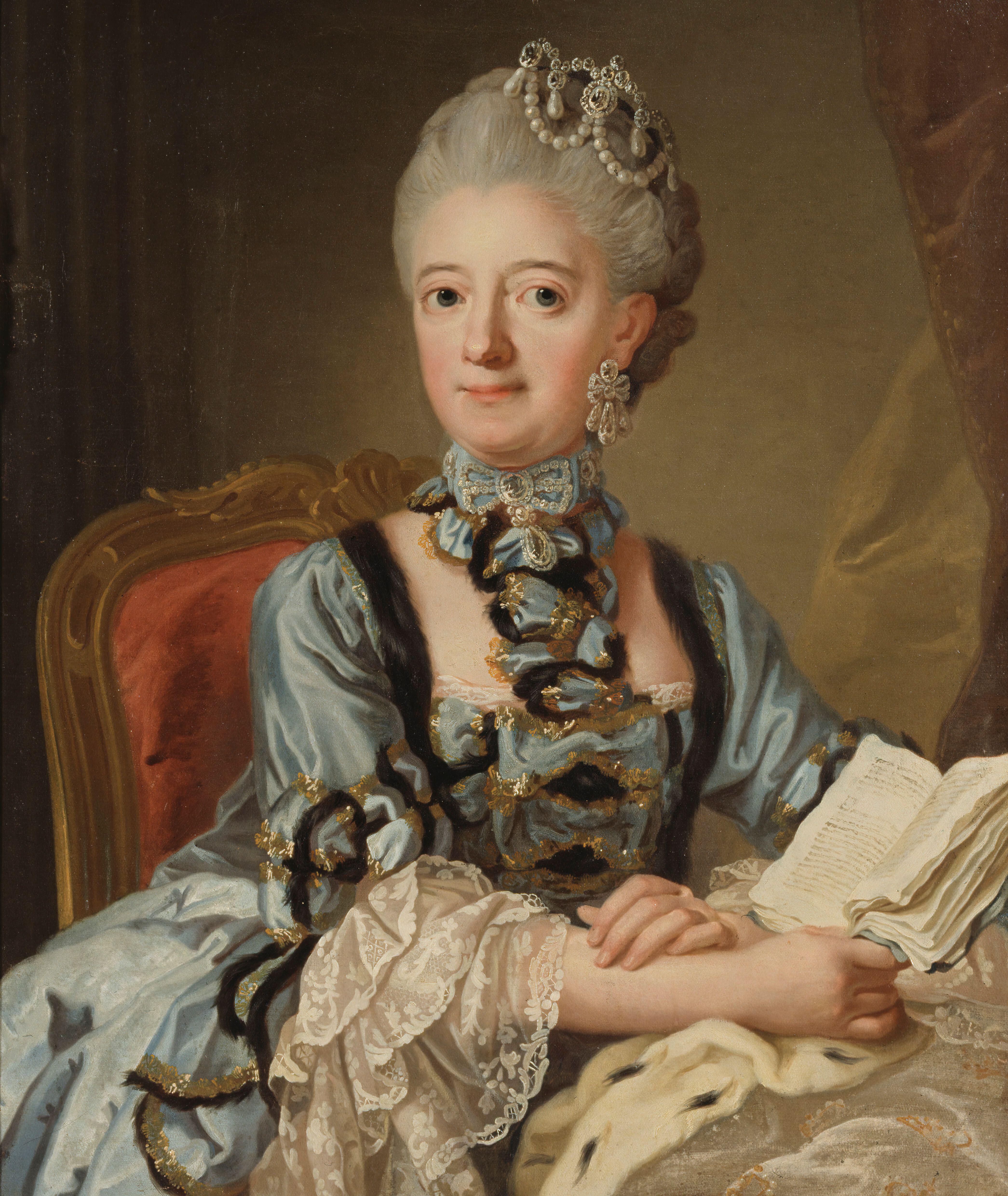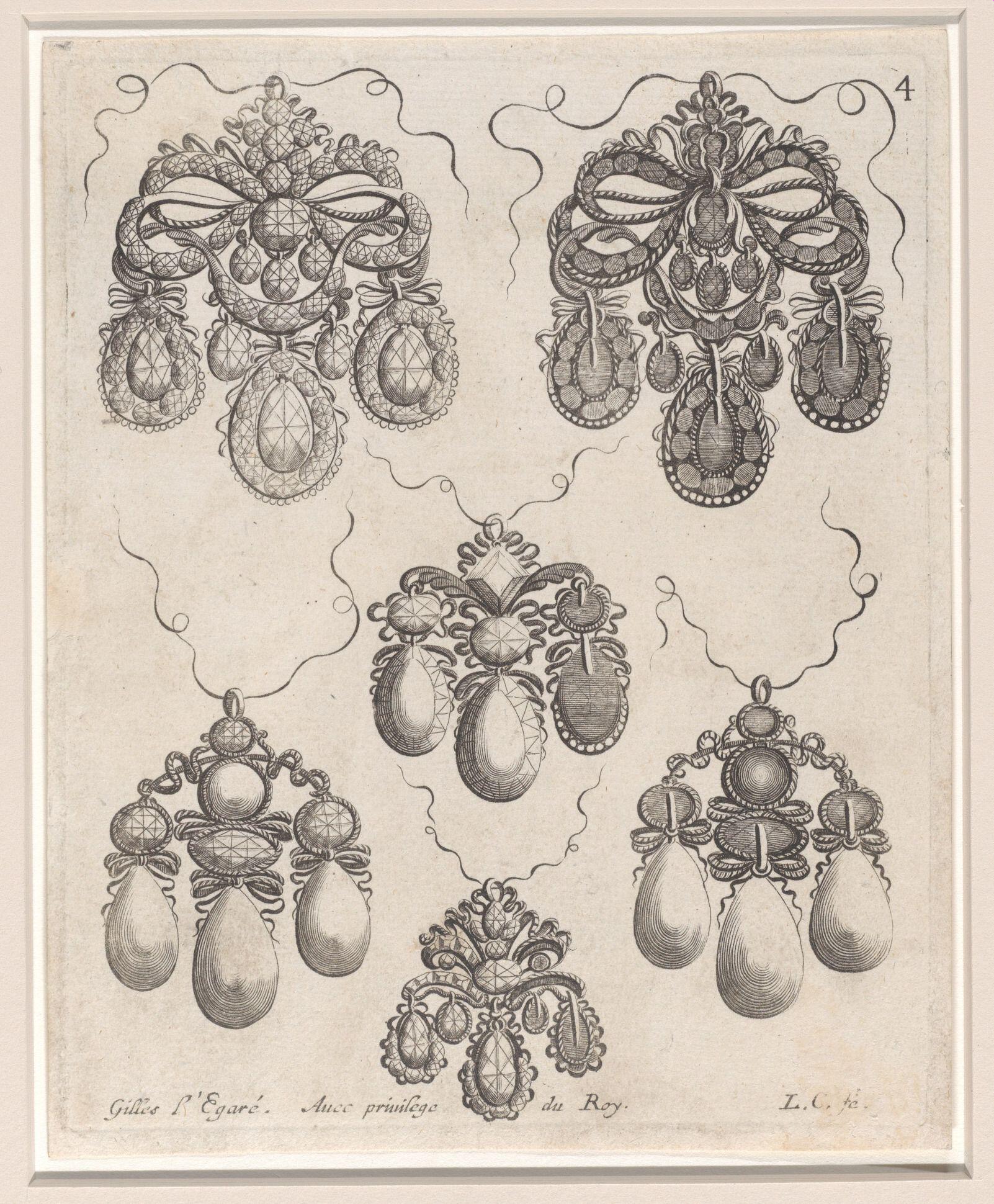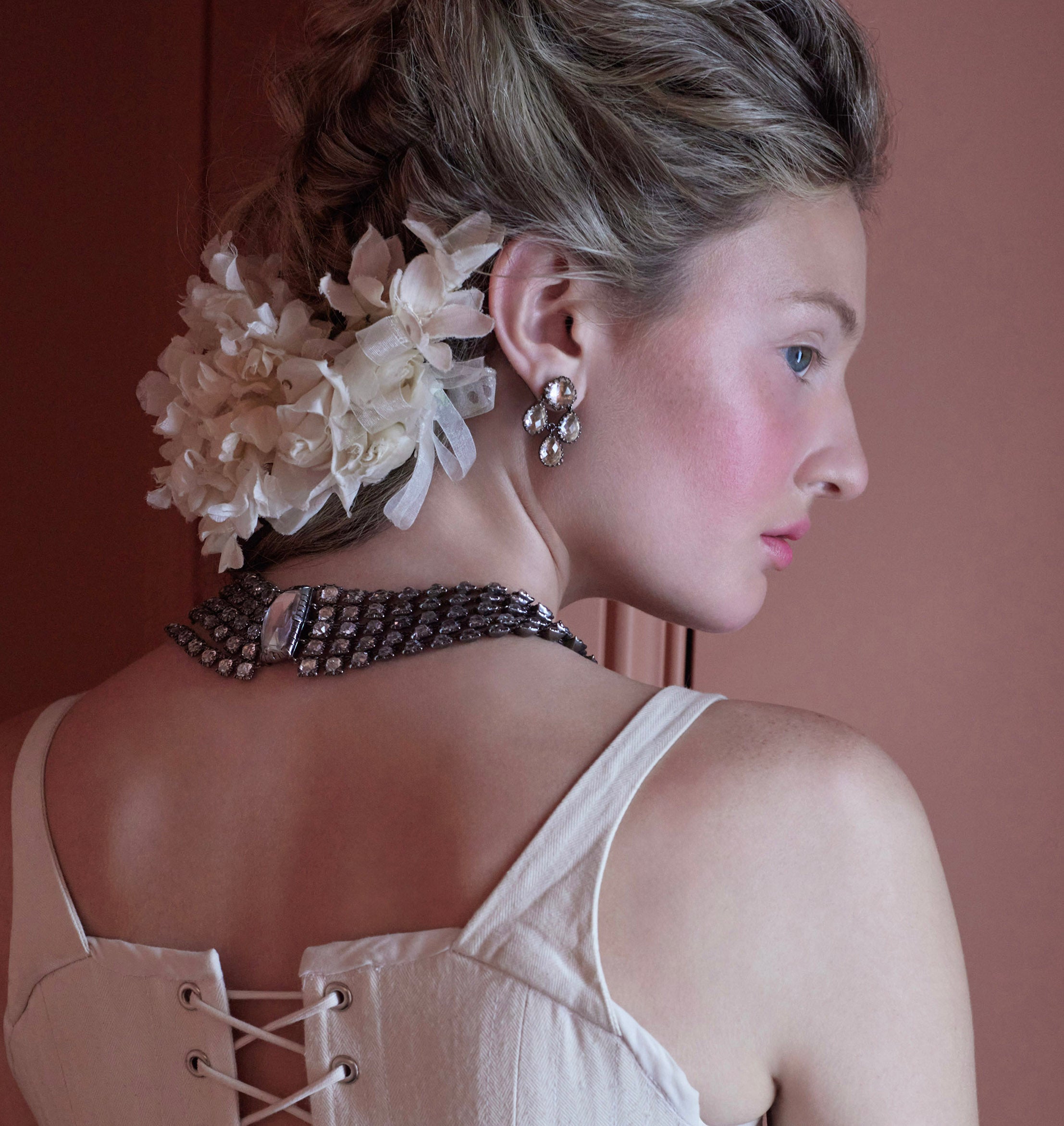What Is A Girandole?
The Timeless Elegance of the Girandole
What was it about the 18th century that turned girandoles into the most fashionable earring of the era? One might say it is a confluence of events that became the perfect storm for a multi-stone earring to be all the rage. In short, fashion, diamond mines, stone cutting, and candles were the driving forces that catapulted girandoles to stardom.
Girandoles were popular across Europe, and each country was responsible for adding their own nuances to the silhouette, that continued to center on a surmount supporting three pear-shaped drops. So popular was this form, that it never fell out of favor. Today, jewelry designers and collectors alike continue to embrace this sparkling and enduring style.

Georgian ruby, diamond, and silver girandole earrings.
From Emily's Personal collection
Possibly France, ca 1780
Queen Lovisa Ulrika of Prussia, later Queen of Sweden, wearing elaborate diamond girandole earrings.
Portrait by Lorens Pasch, ca 1768


Note the removable drops in this early 17th century sketch of pendants, allowing them to convert from day to night.
Plate from french jeweler Gilles Légaré, circa 1663.
The girandole, mostly used in earrings, is among the most enduring silhouette, remaining popular since its introduction in the 17th century.

Discover our modern-day girandole earrings.
*Header Image: Portrait of Princess Isabella Of Bourbon-Parma (1741-1763) by Anton Rafael Mengs.